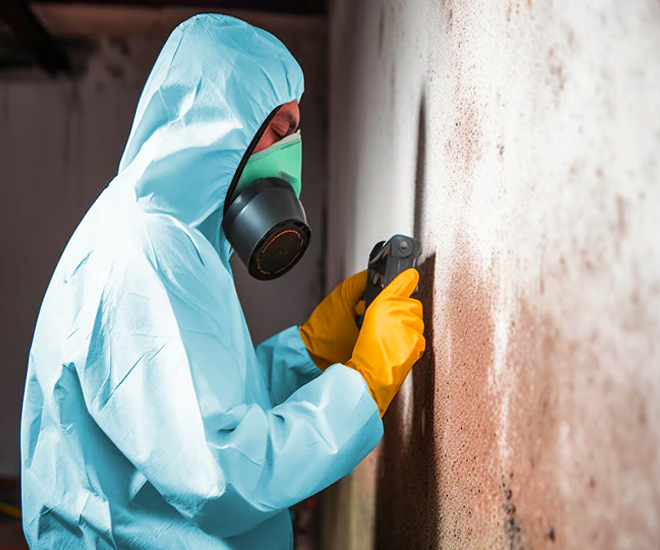Accessing Neighborhood Post Remediation Mold Testing Near Me
Effective Message Mold And Mildew Removal Solutions for Your Home
Mold and mildew growth in homes can be a persistent issue, commonly needing a systematic method for efficient post-remediation options. From recognizing the aspects that add to mold development to executing proper cleaning methods and dampness control steps, the process can be intricate yet vital for maintaining a healthy and balanced living atmosphere. In addition, exploring natural removal remedies and establishing a regular for continuous upkeep are important parts of a detailed mold removal strategy. As house owners strive to deal with mold problems, finding one of the most effective services becomes paramount for the health of their houses.
Understanding Mold Growth Variables
The key variable adding to mold and mildew development is moisture. Mold and mildew spores need moisture to flourish and sprout, making moist or damp environments highly prone to mold problems.

Additionally, air flow and light exposure can influence mold development. Locations that lack appropriate air flow and all-natural light are much more susceptible to mold advancement. By dealing with these elements comprehensively, individuals can effectively mitigate mold development and guard their living settings.
Appropriate Mold Cleaning Methods
Using effective cleansing approaches is crucial in attending to and protecting against the recurrence of mold contamination in interior environments. When taking care of mold, it is essential to prioritize safety by using safety equipment such as masks, handwear covers, and safety glasses. The primary step in appropriate mold cleaning is to have the damaged location to stop the spread of spores to uncontaminated locations. This can be achieved by sealing the room and using air scrubbers or negative air machines to keep air quality.

Implementing Wetness Control Procedures
To successfully stop mold development and contamination in interior atmospheres, executing dampness control actions is critical. Moisture is the primary factor that gas mold development, making it essential to handle moisture levels within the home. One reliable step is to make use of dehumidifiers to maintain interior humidity levels below 60%. Additionally, making certain proper air flow in locations susceptible to moisture build-up, such as kitchen areas and shower rooms, can help decrease the danger of mold development. On a regular basis inspecting and fixing any type of leakages in plumbing, roofing systems, or windows is likewise essential in protecting against excess moisture build-up. Utilizing exhaust fans while food preparation or bathing, and enabling air circulation by keeping furnishings somewhat away from wall surfaces can help in wetness control. Utilizing moisture-resistant products in high-humidity locations, such as mold-resistant drywall and paints, can be advantageous. By diligently carrying out these dampness control actions, house owners can effectively minimize the probability of mold recontamination and keep a healthy and balanced interior atmosphere.
Utilizing All-natural Removal Solutions
After effectively applying wetness control measures to avoid mold development in indoor environments, house owners can currently discover the effectiveness of all-natural removal remedies in maintaining a healthy and balanced home. All-natural remediation remedies utilize ecologically pleasant approaches to fight mold and mildew and mildew, making them a popular choice for those looking for non-toxic alternatives. One such solution is utilizing vinegar, a natural antimicrobial representative, to tidy and disinfect surface areas contaminated by mold and mildew. Simply thin down vinegar moved here with water and spray it onto the influenced locations, allowing it to sit for a few hours before wiping clean. In addition, tea tree oil, known for its antifungal properties, can be blended with water and sprayed onto mold-infested surface areas to hinder additional growth. An additional natural alternative is hydrogen peroxide, which can successfully eliminate mold and mildew on various surface areas without leaving hazardous residues behind. By including these natural removal solutions into their cleaning regimens, house owners can effectively battle mold development while advertising a much healthier indoor atmosphere on their own and their family members.

Keeping a Mold-Free Environment
Frequently inspecting areas prone to mold development, such as washrooms, basements, kitchen areas, and attics, is important. Correct air flow in areas with high humidity degrees is also essential to preventing mold and mildew development.
In addition, keeping tidiness in the home is vital for mold prevention. Frequently cleaning and cleaning surfaces, carpetings, and furniture can help get rid of mold and mildew spores before they have a possibility to multiply and settle. Utilizing mold-resistant products for building and construction products and furnishings can better help in creating a mold-free setting. Maintaining indoor plants in check and making sure appropriate drain in outside landscaping can reduce wetness accumulation, decreasing the chance of mold invasions. By adhering to these aggressive upkeep techniques, house owners can efficiently promote a mold-free living room.
Verdict
In final thought, it is necessary to deal with mold and mildew growth variables, utilize correct cleansing techniques, carry out moisture control steps, utilize natural remediation services, and keep a mold-free setting in order to effectively manage post mold and mildew remediation in your home - Post Mold remediation cleaning. By following these approaches, you can protect against mold from repeating and guarantee a healthy living atmosphere for you and your family
The primary factor contributing to mold growth is wetness. Mold and remove mold mildew mildew spores require dampness to germinate and prosper, making moist or damp atmospheres very prone to mold and mildew infestations.To successfully prevent mold and mildew development and contamination in indoor settings, implementing moisture control steps is extremely important. In addition, ensuring correct air flow in remove mold smell from wood areas susceptible to moisture build-up, such as shower rooms and cooking areas, can aid decrease the danger of mold and mildew growth.After successfully executing dampness control procedures to avoid mold growth in indoor atmospheres, home owners can now explore the performance of natural removal remedies in maintaining a healthy and balanced living area.